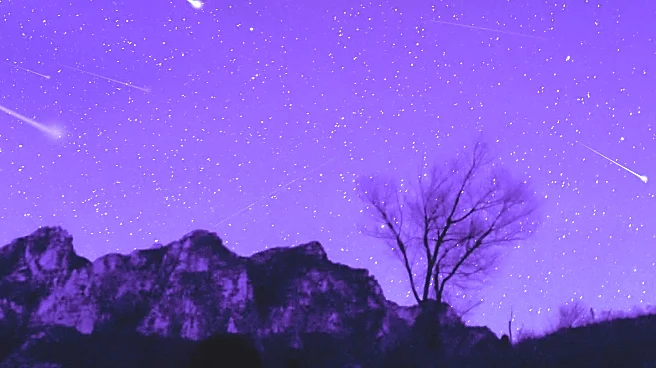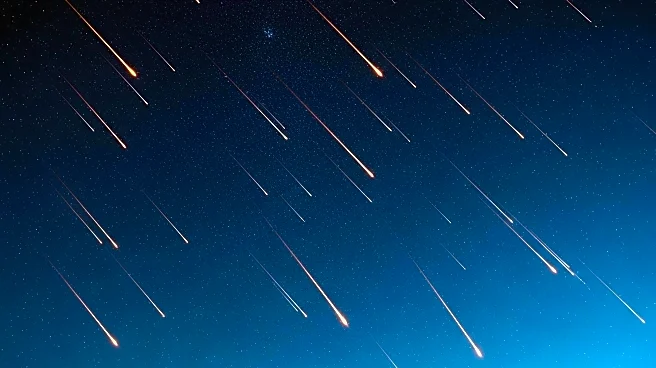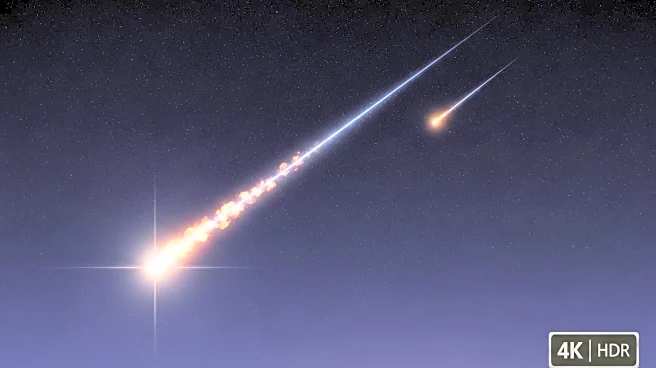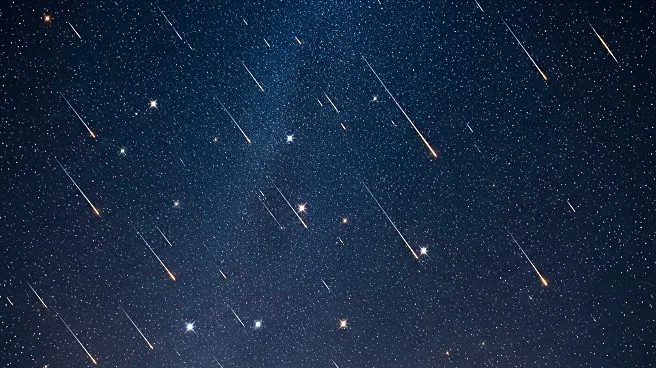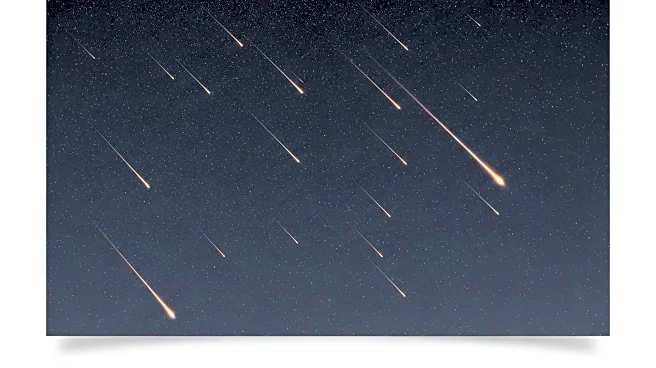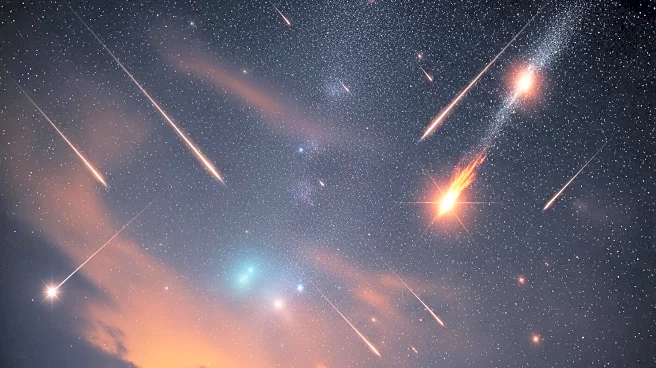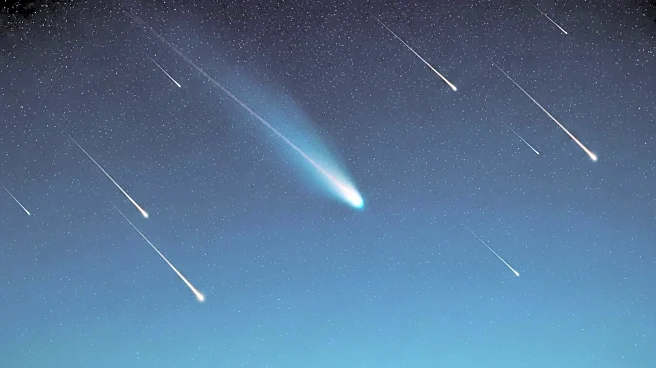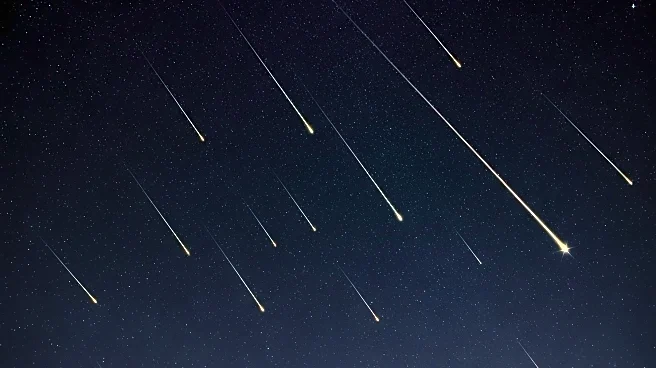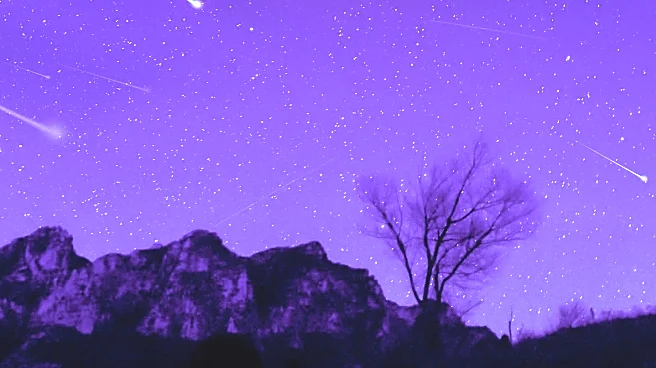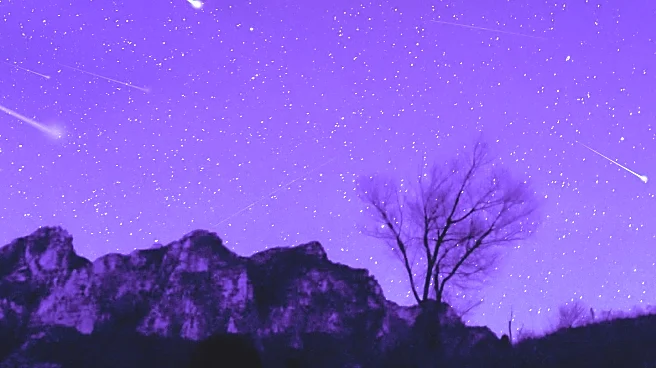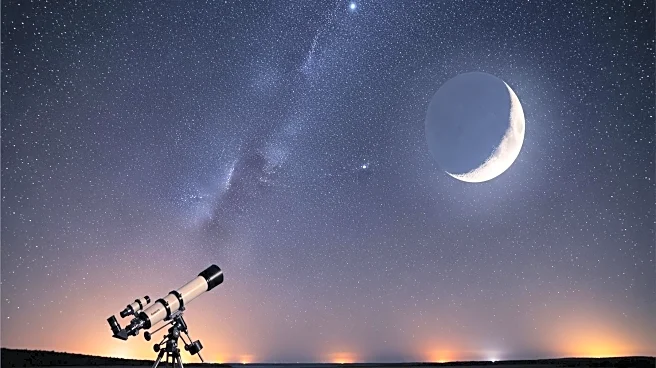What's Happening?
The Taurid meteor showers, consisting of the Southern and Northern Taurids, are currently active and expected to peak soon. The Southern Taurids have been visible since September and will peak on November 4, while the Northern Taurids will become active on October 20 and peak on November 11. These showers are caused by debris from comet 2P/Encke burning up in Earth's atmosphere. Under ideal conditions, observers can see up to five meteors per hour, although a full moon may hinder visibility. The Taurids are known for producing bright fireballs that can illuminate the night sky.
Why It's Important?
The Taurid meteor showers provide an opportunity for public engagement with astronomy, offering a chance to witness rare fireball events. These bright meteors can captivate audiences and spark interest in space science. The showers also highlight the importance of dark sky preservation, as light pollution can significantly impact visibility. Communities may be encouraged to reduce light pollution, benefiting both astronomical observations and environmental conservation.
What's Next?
As the peak dates approach, stargazers and astronomy clubs may organize viewing events to observe the Taurid meteor showers. Educational institutions might use the event to promote interest in astronomy and science. The showers could also lead to increased public interest in future celestial events, fostering a broader appreciation for space exploration.
Beyond the Headlines
The Taurid meteor showers emphasize the dynamic nature of Earth's interaction with celestial bodies. They serve as a reminder of the historical significance of comets and their impact on Earth's atmosphere. The event may also prompt discussions on the long-term effects of space debris and the importance of monitoring celestial objects.
